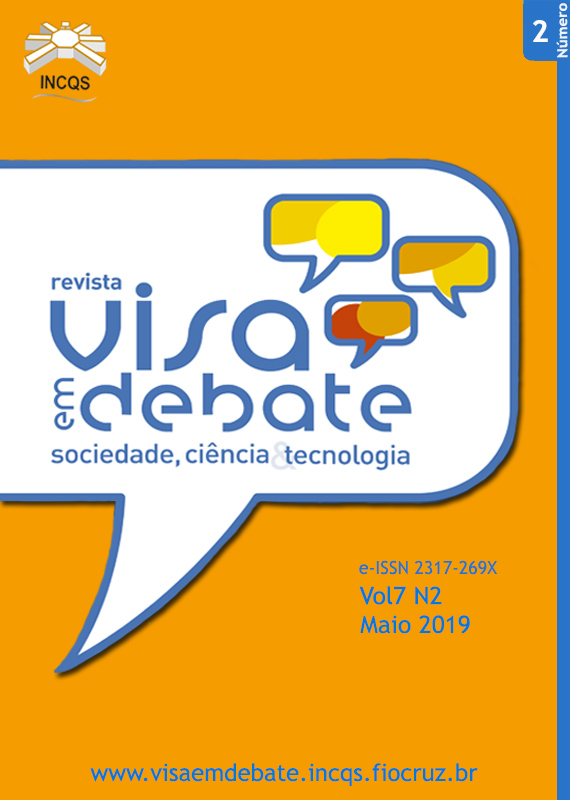Perspectives and interests in the construction of occupational health standards: the case of silver nanoparticles
DOI:
https://doi.org/10.22239/2317-269x.01257Keywords:
Nanosilver, Risks, Recommended Exposure Limits, Regulation, Occupational SafetyAbstract
Introduction: The regulation of chemical substances involves a difficult negotiation between social actors, and requires the articulation between scientific analysis and its conversion into a legal norm. Objective: The article addresses the discussion elicited by a public consultation on a voluntary regulation guide on silver nanoparticles (AgNP) in workplaces. It examines the comments made from 2016 to 2018 by diverse social actors – business representatives, non-governmental organizations (NGO) and independent researchers – to two successive draft versions of a Recommended Exposure Limit (REL) in working environments with AgNP. The REL is a voluntary guideline on permissible exposure limits elaborated by the NIOSH in the United States. A guideline of this kind combines scientific information with its legal adjustment. Method: The methodology used was a content analysis of the comments, structured upon a historical and sociotechnical contextualization of nanotechnologies carried out through literature review and documental analysis. Results: The article shows how different social actors position themselves in the controversy over the risks of nanosilver, revealing a pattern of behavior consistent with their position in the research, production and commercialization of this new nanomaterial. While a group of actors, aligned with the interests of AgNP producers, proposed the restriction of mandatory and AgNP-specific regulation, another group of more
heterogeneous actors, identified with the interests of workers and consumers, demanded for more scientific and technical information and stricter health protection measures. Conclusions: Within these divergent stands, the regulatory agency behaved in a transparent and receptive manner while conducting the public consultation and substantively modified the originally proposed exposure limits to AgNP.
Downloads
Downloads
Published
Issue
Section
License
Copyright (c) 2019 Health Surveillance under Debate: Society, Science & Technology (Vigilância Sanitária em Debate: Sociedade, Ciência & Tecnología) – “Visa em Debate”

This work is licensed under a Creative Commons Attribution-NonCommercial-NoDerivatives 4.0 International License.
COPYRIGHT ALLOWANCE The author (s) hereinafter designated as the ASSIGNOR hereby assign and transfer, free of charge, the ownership of the copyrights related to this ARTICLE to the Vigilância Sanitária em Debate: Sociedade, Ciência & Tecnologia (Health Surveillance under Debate: Society, Science & Technology) – Visa em Debate, represented by FUNDAÇÃO OSWALDO CRUZ, established at Av. Brasil, nº 4365, Manguinhos, Rio de Janeiro, RJ, Brazil, CEP 21045-900, under the conditions set out below: (a) The terms and conditions set forth in this Agreement shall apply to the following: 1. The ASSIGNOR declares that they s(he) is (are) the author (s) and owner (s) of the copyrighted property of the ARTICLE submitted. 2. The ASSIGNOR declares that the ARTICLE does not infringe the copyrights and / or other property rights of third parties, that the disclosure of images (if any) has been authorized and that they s(he) assume(s) full moral and / or property liability for its content, before third parties. 3. THE ASSIGNOR assigns and transfers all copyrights relating to the ARTICLE to the ASSIGNEE, especially the rights of editing, publication, translation into another language and reproduction by any process or technique. The ASSIGNEE becomes the exclusive owner of the rights related to the ARTICLE, and any reproduction, totally or partially, is prohibited in any other means of publicity, printed or electronic, without prior written authorization from the ASSIGNEE. 4. The assignment is free and, therefore, there will be no remuneration for the use of the ARTICLE by the ASSIGNEE.







